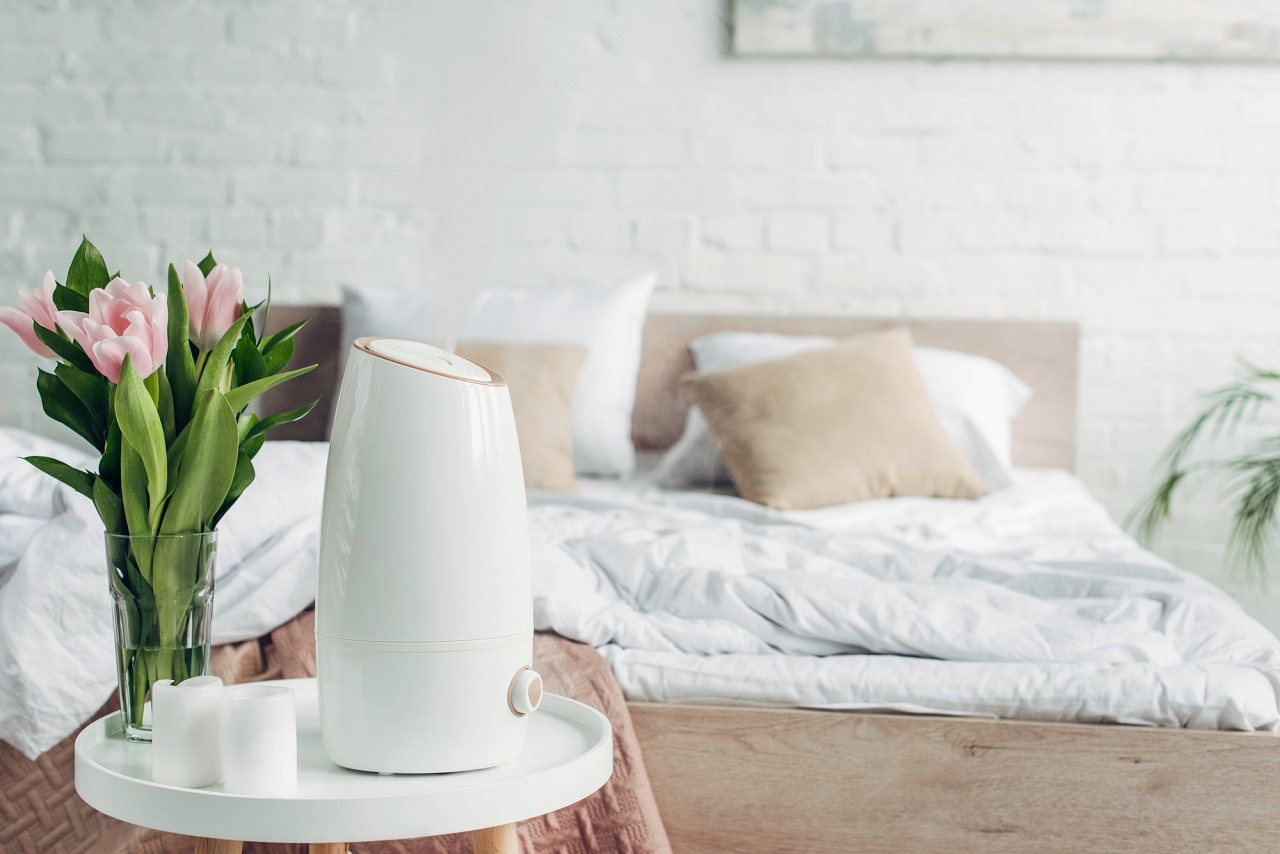Ideally, you should run your air purifier all the time. This ensures indoor air is always clean and free of pollutants.
But running an air purifier 24/7 may not be possible for everyone because of the energy costs and the noise. Thankfully, you can run an air purifier for less time while still maintaining good indoor air quality.
Below are tips on how often to run an air purifier and how to keep indoor air clean and fresh without having to use an air purifier all the time.
Is It Ok To Run An Air Purifier All The Time?

Yes, it’s perfectly okay to leave an air purifier running all the time. Unlike some appliances like heaters, there’s no danger if you run an air purifier 24/7. They don’t overheat or burn out.
In fact, if possible, that’s what you should do. Set the air purifier at a low speed and leave it to continuously remove pollutants and odors from the air.
This keeps indoor air clean and can be especially beneficial if you or someone in the house has allergies.
It may also be necessary to leave an air purifier running all the time if you live in a dusty area, during wildfire season when there’s smoke everywhere, or if you live in a high pollution area (e.g. close to industries).
The only thing to keep in mind is that the air purifier filters will clog up a lot quicker compared to running the air purifier for a few hours each day.
You’ll need to replace the carbon and HEPA air filters sooner. If there’s a washable filter, you’ll need to clean it more often.
The other downside of running an air purifier all the time is the power usage. Air purifiers don’t use a lot of electricity but the figures add up when it’s running 24/7.
On average, air purifiers have a consumption of about 50 watts. Say you run it at a low speed that uses about 30W of power. If it runs for a full day, it’ll use 720W (24 hours * 30W). That comes to around 5kWh in a week and about 20kWh in a month.
Annual consumption is 240kWh. Depending on where you live, that could amount to a few thousand dollars in power bills per year.
Air purifiers can also be noisy, which can be really bothersome if you are sensitive to noises especially when you are asleep. So having a fan running all the time can be annoying and distracting.
How Often (and How Long) Should You Run An Air Purifier?
The good news is that you don’t need to run your air purifier all the time to keep your indoor air clean and fresh.
Here are some tips on how to run your air purifier for less time while still enjoying pollution-free breathing in your home.
Run The Air Purifier In Auto Mode
Instead of wondering when to turn on an air purifier and for how long, why not leave the air purifier to decide for itself?
All you need to do is switch to auto mode. In this mode, the air purifier automatically switches on when it detects contaminants in the air and turns off when the air gets clean. It can also automatically adjust fan speed to deal with different levels of pollution.
Not all air purifiers have an auto mode. Those that do come with a built-in air quality sensor that detects and measures the level of contaminants in the air. Most will even have a display (usually color-coded LEDs) showing you how clean or dirty the indoor air is.
When you start cooking or dust gets into the house, the air purifier automatically kicks on and clears the air. It then turns off or lowers fan speed when it detects a low level of contaminants.
The biggest advantage of an air purifier with auto mode is how efficient it is. It uses less power while still keeping your indoor air clean.
Here’s a video of a Dyson air purifier in auto mode.
Turn The Air Purifier On Only When Necessary
If you have a more basic air purifier that lacks an auto mode, try to turn it on and off yourself as necessary.
This is a bit hard since we can’t see all kinds of pollution. So it’s best for dealing with things like dust, smoke, and odors – pollutants we can see or smell.
You can turn the air purifier when you start cooking or when the next door neighbor starts smoking. Turn it off when you feel the air is cleaner.
If you are allergic or sensitive to things like dust and pollen, turn on the air purifier when you feel a sneeze setting in, your nose starting to clog up or your eyes getting irritated.
Run The Air Purifier for Part of The Day
The other option is to run the air purifier for part of the day. For most homes, running an air purifier for 10-12 hours is enough to keep indoor air clean and fresh.
Choose the half of the day when there is most pollution, which is usually during the day. The air purifier will capture dust, pollen, smoke, and odors when they are at their highest level.
Running the air purifier during the day also ensures you don’t hear its noise when sleeping.
However, if your aim is to save power, consider running the air purifier at night when power is cheaper in some places. Check with your utility to confirm if there’s a cheaper night tariff.
You can also run the air purifier at regular intervals. For instance, turn it for an hour every two or three hours. I recommend running it at max speed to get as much air purification as possible when the air purifier is on.
At night, you can put it on a timer so that it turns off after a few hours.
In the end, how often and how long you run an air purifier depends on the level of pollution in your home, how much odor and pollutants you can tolerate (run the air purifier for longer if you are sensitive), and how much you are willing to spend on power.
Tip: For the best results, make sure you get the right kind of air purifier. A multi-stage HEPA purifier (with a pre-filter, active carbon filter and HEPA filter) can keep your indoor air clean even if you run it for just a few hours each day. Also, get an air purifier that offers at least 2-4 air changes per hour.
How to Improve Indoor Air Quality Without Using An Air Purifier
If you don’t want to run an air purifier all the time, or you’d prefer not to use it all, there are other ways to improve indoor air quality.
You can use these on their own or in addition to an air purifier.
- Use active carbon (charcoal) deodorizer bags to eliminate odors in the house. They do not remove smells as quickly or as effectively as an air purifier, but they can make your home smell fresher. Place a few bags around your home.
- Limit the use of products and items that pollute indoor air. These include aerosols, cigarettes, and hazardous cleaning products.
- Keep humidity in your home between 30% and 50% to prevent the growth of mold. Mold spores are airborne and can cause many respiratory health problems.
- Vacuum your carpet and upholstery often. Pollutants like dust, pet hair, dander and pollen easily settle and hide on these soft surfaces. To prevent these particles from recirculating in the air, use a vacuum with a true HEPA filter.
- Improve the ventilation in your home. You may think that the outdoors is more polluted, but according to the EPA, the level of indoor air pollutants is usually 2-5 times higher than outdoors. Opening windows and adding ventilation and extractor fans can help prevent a build-up of indoor pollutants.
- Fireplaces are a major source of indoor pollution. If you have a wood-burning fireplace, either get rid of it or convert it to a vented gas fireplace. You can also get a wood or pellet burning insert, which reduces indoor emissions. As for gas fireplaces, a vented one is the best. It doesn’t emit dangerous gasses like nitrogen dioxide and carbon monoxide into your home. Even better, install an electric fireplace. It has zero emissions.
Do Indoor Plants Purify Indoor Air?
You may have heard some people recommend using indoor plants to improve indoor air quality.
It is true that plants can absorb formaldehyde, carbon monoxide and other dangerous volatile organic compounds (VOCs) from indoor air.
But their air purifying effect is negligible. According to studies, indoor plants don’t do much to reduce indoor air pollutants. You’d need a crazy amount of plants in your home (about 1 plant per square foot of your home) to get significant air purification.
A simple air purifier is more capable than hundreds of indoor plants.
In some cases, indoor plants can have the opposite effect. They can introduce pollutants like dust, pollen, VOCs and bacteria into the air.
Too many indoor plants can also increase humidity and cause mold growth, which pollutes the air with toxic spores.
Having a few indoor plants is fine, but don’t rely on them to clean up the air.




